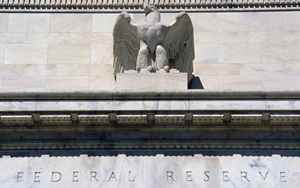(Finance) – The 10-year Treasury yield has 3% stake, returning to levels not seen since December 2018, and then retracing below 2.99%. The sell-off on US government bonds is linked to expectations for the Federal Reserve meeting this week, with the US central bank ready to announce major interest rate hikes and a reduction in its balance sheet (which amounts to approximately $ 9 trillion). The Federal Open Market Committee (FOMC) decision will be announced Wednesday at 8pm (Italian time), with President Jerome Powell holding a press conference at 8.30pm.
“After Jerome Powell’s mea culpa who acknowledged that the FED should have acted sooner, for the members of the Federal Open Market Committee (FOMC) this is a return to origins, with price stability as the main objective – commented Franck. Dixmier, Global CIO Fixed Income of Allianz Global Investors – Their more recent and decidedly hawkish comments leave no doubt about the next meeting of 3 and 4 May: the Fed should announce a rate hike of 50 basis points and a reduction in the size of its balance sheet from June “.
Comments from Fed officials over the past few weeks were joined by Friday’s reading of PCE price index core, a key measure of US inflation. According to what was communicated by the Bureau of Economic Analysis (BEA), it showed a positive change of 0.3% on the month and 5.2% on the year (+ 5.3% the previous month and expectations). Also known as “the Fed’s preferred inflation indication“, the PCE price index core measures the costs that consumers pay on a wide range of items and explains how their behavior changes in response to market dynamics.
“The global nature of the current surge in inflation makes the Federal Reserve’s job in reducing US inflation even more difficult,” said John Stoltzfus, Oppenheimer’s chief investment strategist. much of the inflationary pressure comes from exogenous factors (global oil prices, supply chain bottlenecks, Zero Covid strategy in China), the Fed’s use of its main political lever, the increase in the overnight borrowing rate to drive up financing costs for businesses and consumers, has a limited power to stop these pressures global inflationary “.
